There follows a discussion of the value, and otherwise, of nursery rhymes. After this there are some new nursery rhymes, and a song or two, so scroll straight down if you wish to skip the essay!
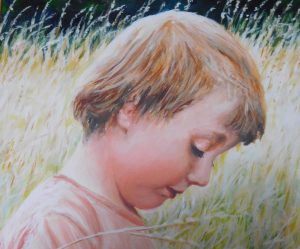
It has recently been widely reported (time of writing, November 2017) that Amanda Spielman, Chief Inspector of Ofsted, has publicly spoken of the importance of using nursery rhymes with very young children and her concern that they may be beginning to disappear from children’s experience. Speaking at the Nursery World Business Summit, she in fact only mentioned nursery rhymes briefly, within a section on the importance of nursery education in language development. However, she certainly spoke of them as a valuable resource. She suspects that many children today would be unable to recite Sing a Song of Sixpence or The Grand Old Duke of York. It is quite possible that small children nowadays may in fact be able to remember lines from The Gruffalo or We’re Going on a Bear Hunt: the possible decline in popularity of traditional rhymes does not necessarily mean youngsters are missing out on rhymes altogether. However, Amanda Speilman believes that nursery rhymes in particular, because of their unique nature, are a ‘unifier’ and important for the development of language whilst simultaneously teaching ‘a little bit of social history’. It does seem to me that because these rhymes are often recited from memory, rather than always being read, that they are a special and particular case. Although educationalists agree that sharing books with young children is vital, there is something unique about having a rhyme available at any time, anywhere, with hands free to play and sometimes ‘do the actions’. Child development experts would surely say that the hand gestures that many nursery rhymes have to accompany them are good for children’s physical coordination development. But if the oral tradition becomes lost, it may be gone forever. It relies on each generation reciting to the next. Luckily, there are still many books of traditional rhymes available to fall back on when memory fails us. Or maybe its time for us to learn some new rhymes?
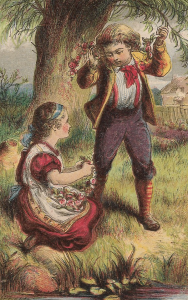
What have experts said on the subject?
I have decided to give a brief summary of what a few authorities on children’s literature have to say on nursery rhymes. Firstly, it seems relevant to touch on the origins of what we think of as ‘nursery rhymes’. Our traditional rhymes were mostly not originally composed for children. Some date back to the Middle Ages, or even earlier. During the seventeenth and earlier eighteenth centuries, children were seen as miniature adults and would have been exposed to the popular rhymes and ballads enjoyed by other family members. Mothers and carers may just have sung or recited whatever popular verse came into their minds when soothing or entertaining children. The subject matter of many popular rhymes and songs would later be considered unsuitable for young ears. The origins of earlier rhymes are in the cries of street sellers, are from love ballads, from proverbs, from tavern and military songs, from the stage and the street. As time went on, and children gradually came to be thought of as needing nurturing and having a certain level of innocence (with early books for children appearing around the 1740s) the words of traditional songs and rhymes would have become altered to make them more suitable. However, many do retain elements of violence and jeopardy. During the nineteenth century more nursery rhymes were composed specifically for young children.
So that’s where nursery rhymes came from, but what of their importance in the twenty-first century? C.W. Sullivan III, in a chapter of Poetry and Childhood entitled Children’s Oral Poetry, states that nursery rhymes are the earliest forms of poetry learned by children and also ‘the earliest rhymes they parody’. Research in school playgrounds has shown how children draw on their own mental libraries of rhymes learnt when very young and creatively apply them to the more grown up environment of school. In her Introduction to Oranges and Lemons: Rhymes from Past Times, Karen Dolby reminds us how well nursery rhymes stick in the memory. ‘I was surprised,’ she writes, ‘how clearly I could remember the words to many of the nursery rhymes I learned…when it seems so easy to forget what I’ve carefully tried to learn since.’ Nursery rhymes, of course, are generally taught to us when our brains are developing and learning rapidly. Karen Dolby also comments on how they are interwoven with our earliest memories and how she is reminded of precious times sharing them with her mother. From playground research, it would appear that these early rhymes, so well embedded in our minds, go on to encourage children’s own rhyme making. The Introduction to the Oxford Dictionary of Nursery Rhymes, asserting the fundamental value of such, claims that ‘children become joyful and wise listening to the same traditional verses.’
Experts believe that nursery rhymes help us to connect with each other and with the past. Virginia Lowe has written at length about her detailed observations of her own children as they enjoyed nursery rhymes and other forms of poetry. In Poetry and Childhood (Chapter 25, Playing with Words) she states that ‘The poetic language they heard and read gave richness to their expression, different ways of perceiving the world and aided their understanding of other people.’ Morag Styles (in the same publication) also sees nursery rhymes as of particular importance because they are ‘inextricably linked to women’s history and oral traditions’. In an earlier publication, From the Garden to the Street, Morag Styles remembers how she loved nursery rhymes as a child. Her book’s chapter on nursery rhymes, Old Mother Hubbard: and Other Nursery Rhymes, Old and New, also comments that Caribbean poetry has ‘links with the oral tradition and its inclusion of nursery rhymes’ and that there is a ‘universality’ to nursery rhymes since there are similarities in nursery verses across Europe and Scandinavia. Styles asserts that traditional nursery verse exists in some form or other ‘in most parts of the world.’ The passing on of rhymes from one generation to the next also creates a vehicle by which the past can be shared and better understood. Styles calls this ‘the bond between one childhood and another’ which is established by this oral tradition of entertainment that is often centuries old.
So, nursery rhymes are thought to help vocabulary development and self-expression at an early age, to foster children’s own poetry composition and to provide us all with information about social history and oral traditions. They provide a way by which we can feel better connected with the past and with our own family members’ past. Furthermore, they are a form of literature which many places throughout the world have broadly in common, so they may help us with our connections with other cultures too. Virginia Lowe even felt that there was a positive side to the less joyful messages of traditional rhymes too, as she reported how her son began to develop his concept of death through the rhyme Who Killed Cock Robin. She also suggests that although there is some ‘anxiety’ to be experienced through nursery rhymes, they can also contain ‘consolation’.
Is there an alternative view?
In an article in The Telegraph from 2014 columnist Michael Deacon wrote:
‘I have resolved never to read my baby son any nursery rhymes. The amount of gore and cruelty they contain is shocking.’ He goes on to describe the inevitable death of the baby in Rock-a-Bye Baby, the relatively careless treatment of Jack in Jack and Jill, when Jack fractures his skull, and the dreadful way in which the Old Woman Who Lived in a Shoe treated her children. He also cites examples of cruelty to animals. However, the tone of the article is not entirely serious: Mr Deacon generally writes political satire. More authoritative is an article I discovered from the British Medical Journal, no less, from 2004 [Vol 89, Issue 12]. by P. Davies et al. This assessed ‘the rates of violence in nursery rhymes compared to pre-watershed television viewing’ and looked at whether this could cause violent behaviour in children. In the rhymes they examined (from a compilation) 40% had some sort of violence in them as compared to 51% of the television programmes. They also took note of other negative elements depicted in the rhymes such as ’emotional distress to humans’ and ‘episodes of law breaking’. One factor they pointed out, was that other types of children’s literature also contain violence (the Harry Potter books for example) but that such books are generally read by older children, whereas nursery rhymes are read to children ‘from birth’. In the study, the researchers recited rhymes and recorded the reactions of children (in a London nursery) to them. They discovered that ‘Episodes of violence were greeted equally with positive, negative of neutral responses. The presence of other small children, biscuits, and musical purple dinosaurs all appeared to confound response by their external influences’. The conclusion of the study was that ‘a significant amount of violence permeates childhood’ whether by old or new entertainment forms and that the fact that nursery rhymes are a ‘non-visual’ medium may make them even more influential, since ‘the imagined can be more powerful than the graphic’. Also, television is twice as likely as nursery rhymes to show or mention the results of violence, whereas nursery rhyme listeners may invent their own outcomes; outcomes which could be ‘more disturbing’ than ‘having the outcome spelt out’. The investigation does point out that the effects of violence may be mitigated by the telling. A child may not be aware of the meaning of a rhyme unless it is expressly explained by the deliverer. Perhaps, like cartoon violence, the context could be crucial. Children are hopefully encountering nursery rhymes in a safe and loving environment and the context is playful and enjoyable. However, I have heard that nursery rhymes are sometimes used in horror films (although I never watch any!) and that their sinister aspects can be brought to the fore in an alternative context. The BMJ article finally suggests that ‘certain children’ could potentially be adversely affected by the portrayal of emotional distress or violence in nursery rhymes, although, ‘The development of the violent child…is multi-factional, involving many socioeconomic and educational factors.’
It is also important to consider that some old rhymes do contain racist references: one in particular is very well known and does not need repeating here. Modern versions of the culprits have been improved with alternative vocabulary, but these still carry, in people’s memories, nasty shadows of their former selves. Nursery rhymes may also be communicating to children a view of women which is outdated and potentially sexist. I came across a paper by Ra’ed Awad Al-Ramahi of the University of Jordan which was a ‘lingusitic analysis’ of nursery rhymes showing that they can ‘help reinforce the ideology of woman as a subordinate being’. He writes that females are shown as ‘dependent’, as ‘an ideal person only in domestic work’ and are ‘often described from the male point of view’. He explains how The Old Woman Who Lived in a Shoe is in a miserable condition, depicted as completely unable to cope and, without a man present, is an economic disaster area. There are also rhymes where the mother is most definitely at home soothing baby whilst the man is off doing things such as going hunting or purchasing diamond rings and looking glasses. Of course, because rhymes are so ancient, the women in them are bound to be depicted in the roles they had in the societies of the past; societies before female emancipation. However, could old stereotypes influence children through this medium? Is the ‘understanding of other people’ that Virginia Lowe felt her children had gained from nursery rhymes a skewed one? When Jack trots home bravely ‘as fast as he could caper’ (having suffered a head injury falling down a hill) whereas Jill appears merely to be ‘tumbling after’ Jack, is this the sort the sort of gender stereotyping that is helpful in this day and age?
It also turns out that I was able to draw on a piece of evidence closer to home. In my home in fact. Mentioning to my son (who is twelve at the time of writing) that I had been looking into nursery rhymes, he informed me that he had never liked them, that he had found singing them in unison uncomfortable in some way and that he had disliked the tunes of some those that were sung – especially Ring-a-Ring-a-Roses which he had always found an unhappy, unsettling sound. He used words like ‘strange’ and ‘creepy’ when talking about old rhymes. It seemed that he had perhaps felt frustrated and confused, in his youngest years, by the unfamiliar, outdated vocabulary and masked ideas that many old rhymes contain. I suspect he knew that he wasn’t getting the full meaning and disliked that. Perhaps they even made him feel stupid. Much more recently, he had been learning about nursery rhymes from that great modern educator, YouTube. The ‘online culture magazine’, WhatCulture, has a video entitled 9 Jolly Nursery Rhymes With Deeply Disturbing Meanings. It seems that when he watched this he felt that his old feelings about nursery rhymes had been justified and that there was indeed something uncomfortable and sinister about these verses. He enjoyed finally being able to understand their mysteries better!
What can be concluded and should Ofsted be encouraging the use of nursery rhymes?
The value of nursery rhymes as part of English literary history seems certain. The value of rhymes, rhythms and simply the hearing of words, and the sharing of literature, in the earliest stages of language acquisition also seem to be agreed on by experts. However, there are clearly some issues with the content of some old verses, many of which were not originally intended for children’s ears. I have also learnt that some children (including one of my own!) may not enjoy nursery rhymes as much as we might hope or expect. The argument as to whether nursery rhymes are, on balance, a good or bad thing to read with very young children perhaps rests on how powerful those first experiences of literature are. It depends whether any undesirable or outmoded views they may give children of the world are easy to correct later and whether all possible negative aspects of traditional rhymes are outweighed by the positives.
I have discovered there are subliminal messages in nursery rhymes that I had not taken much notice of before. I have also discovered that they are even more intriguing than I previously thought. When I have time, I may not be able to resist doing some more analysis of my own. I shared nursery rhymes rather carelessly with my own children, enjoying them mainly for their sounds and rhythms and for the pleasure of passing on a tradition. I did not stop to consider that my children might not be enjoying the experience very much! Would I read or recite them to the next generation? Probably, but perhaps with a more considered approach. Perhaps educators should do the same.
Some short notes on the experts quoted above:
Morag Styles was Professor of Children’s Poetry until October 2014 and is a researcher and teacher at Cambridge University Faculty of Education and Homerton College, Cambridge.
Iona and Peter Opie were folklorists and nursery and playground rhyme researchers who first published their renowned Dictionary of Nursery Rhymes in 1951. They donated their research audio tapes of children’s games and songs to the British Library and these are publicly available.
Virginia Lowe teaches at Monash University, Australia and has been a lecturer in English, children’s literature and creative writing.
C.W. Sullivan III is a retired Professor of Arts and Sciences, East Carolina University.
[Sources: Poetry and Childhood, edited by Morag Styles, Louise Joy and David Whitley, Trentham Books, 2010.
From the Garden to the Street: Three Hundred Years of Poetry for Children, by Morag Styles, Cassell, 1998.
The Oxford Dictionary of Nursery Rhymes, edited by Iona and Peter Opie, Oxford University Press, 1997.
Oranges and Lemons: Rhymes from Past Times by Karen Dolby, Michael O’Mara, 2015.
The BMJ article (Could Nursery Rhymes Cause Violent Behaviour? A Comparison With Television Viewing, by P. Davies, L. Lee, A. Fox, E. Fox) appears on the website: adc.bmj.com/content/89/12/1103.
Sexist Bias Manifested in the Languages of Nursery Rhymes: Analysis of Sexist Linguistic Features, by Ra’ed Awad Al-Ramahi was published in the European Scientific Journal, Oct 2013, Vol. 9, No. 29, freely available via internet]
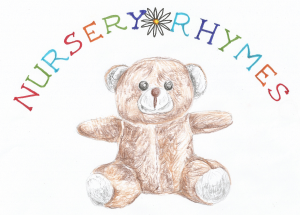
New Nursery Rhymes
(which are not completely guaranteed free of bad influences!)
ONE AND TWO
One and two
Find your shoe,
Three and four
Close the door,
Five and six
Mend and fix,
Seven and eight
Don’t be late,
Nine and ten
Start again.
QUEEN OF THE BEES
Zippety, flippety, Queen of the bees,
Make haste to your hive
And to work, if you please,
For we must have honey
To spread on our bread,
And you must have babies
To tuck into bed.
THERE WAS A MAN WITH GOLDEN HAIR
There was a man with golden hair
Who thought he was a king,
He stood upon a golden stage
But found he couldn’t sing.
He went to build a golden wall
But found he had no bricks,
He tried to make a golden fire
But found he had no sticks.
He had a throne of golden glass
Beside a lake of oil,
And when he cooked his turkey lunch
He wrapped it in gold foil.
PAM LIKED HAM
Pam liked ham with bread and jam,
Her sister she loved mustard;
But brother Sam was not for ham,
He lived on bowls of custard
THREE LITTLE BABIES
Three little babies in a row,
And one stole all the dinner;
So that little baby, she got fat
While the other two just got thinner.
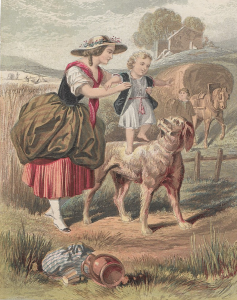
I HAD A LITTLE DOGGY
I had a little doggy
With a coat as black as jet,
He jumped into a puddle
And he made me very wet;
He chased another little dog
As far as I could see,
I had to run right after him
And Mum ran after me.
THE BIRD IN THE TREE
Can you see the bird in the tree?
He can’t see you,
But he can see me;
In a minute he will fly,
And we will wave
The bird goodbye.
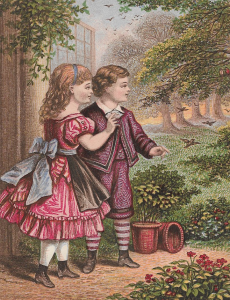
MARY MALONEY
Mary Maloney shot off on her pony,
And her poor brother Tom couldn’t catch her,
So he made his way home,
And left her to roam
While he munched on a loaf of focaccia.
But soon Mary’s mother was cross with the brother
Neglecting his sister to scoff;
It was only the pony
Of Mary Maloney
Who did not get a good telling off.
BY THE SEA
(These words are the lyrics to a song which can be heard by clicking below)
Sing me a song of candyfloss
And buckets full of crabs, oh,
Sing me a song of sandy toes
And cliffs where salty winds blow,
Sing me a song of slippery pools
And all the things that we know
Gather by the sea.
Sing me a song of curling waves
And pebbles smooth as glass, oh,
Sing me a song of crunchy shells
And rocks where seagulls swoop low,
Sing me a song of fishing boats
And all the things that we know
Gather by the sea.
Sing me a song of fish and chips
And drippy, licked ice creams, oh,
Sing me a song of cricket games
And laughter at the pier show,
Sing me a song of sandy dunes
And all the things that we know
Gather by the sea.
(Musical accompaniment by Scuffy)
LULLABY
This may also be listened to by clicking here: Lullaby
Close your eyes,
My baby close your eyes;
Let your dreams your pillow be, and sleep,
‘Til the blue’s returning to the skies
And the swans are gliding on the stream.
Close your eyes,
My baby close your eyes;
For the moon has come you rest,
‘Til the sun returns to make you wise,
And the birds are singing in their nests.